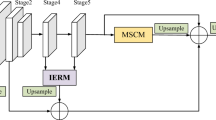Abstract
Deep neural networks as fundamental tools of deep learning have evolved remarkably in various tasks; however, the computational complexity and resources costs rapidly increased when using deeper networks, which challenges the deployment of the resource-limited devices. Recently, shift operation is considered as an alternative.to depthwise separable convolutions, using 60% fewer parameters compared spatial convolutions. Its basic block is composed by shift operations and 1 \(\times \) 1 convolution in the intermediate feature maps. Previous works focus on optimizing the redundancy of the correlation between shift groups, making shift to be a learnable parameter, which yields more time to train and higher computation. In this paper, we propose a “dynamic routing” strategy to seek the best movement for shift operation based on attention mechanism, termed Routing Attention Shift Layer (RASL), which measures the contribution of channels to the outputs without back propagation. Moreover, the proposed RASL shows strong generalization to many tasks. Experiments on both classification and semantic segmentation tasks demonstrate the superior performance of the proposed methods.
Access this chapter
Tax calculation will be finalised at checkout
Purchases are for personal use only
Similar content being viewed by others
References
Jacob, B., Kligys, S., Chen, B., et al.: Quantization and training of neural networks for efficient integer-arithmetic-only inference. In: Proceedings of the IEEE Conference on Computer Vision and Pattern Recognition, pp. 2704–2713 (2018)
Zhang, D., Yang, J., Ye, D., Hua, G.: Lq-nets: learned quantization for highly accurate and compact deep neural networks. In: Proceedings of the European Conference on Computer Vision (ECCV), pp. 365–382 (2018)
Han, S., Mao, H., Dally, W.J.: Deep compression: compressing deep neural networks with pruning, trained quantization and huffman coding. arXiv preprint arXiv:1510.00149 (2015)
Guo, Y., Yao, A., Chen, Y.: Dynamic network surgery for efficient dnns. In: Advances in Neural Information Processing Systems, pp. 1379–1387 (2016)
Howard, A.G., Zhu, M., Chen, B., et al.: Mobilenets: efficient convolutional neural networks for mobile vision applications. arXiv preprint arXiv:1704.04861 (2017)
Zhang, X., Zhou, X., Lin, M., Sun, J.: Shufflenet: an extremely efficient convolutional neural network for mobile devices. In: Proceedings of the IEEE Conference on Computer Vision and Pattern Recognition, pp. 6848–6856 (2018)
Wu, B., Wan, A., Yue, X., et al.: Shift: a zero flop, zero parameter alternative to spatial convolutions. In: Proceedings of the IEEE Conference on Computer Vision and Pattern Recognition, pp. 9127–9135 (2018)
Sandler, M., Howard, A., Zhu, M., Zhmoginov, A., Chen, L.-C.: Mobilenetv 2: inverted residuals and linear bottlenecks. In: Proceedings of the IEEE Conference on Computer Vision and Pattern Recognition, pp. 4510–4520 (2018)
Jeon, Y., Kim, J.: Constructing fast network through deconstruction of convolution. In: Advances in Neural Information Processing Systems, pp. 5951–5961 (2018)
Chen, W., Xie, D., Zhang, Y., Pu, S.: All you need is a few shifts: designing efficient convolutional neural networks for image classification. In: Proceedings of the IEEE Conference on Computer Vision and Pattern Recognition, pp. 7241–7250 (2019)
Hacene, G.B., Lassance, C., Gripon, V., Courbariaux, M., Bengio, Y.: Attention based pruning for shift networks. arXiv preprint arXiv:1905.12300 (2019)
Sabour, S., Frosst, N., Hinton, G.E.: Dynamic routing between capsules. In: Advances in Neural Information Processing Systems, pp. 3856–3866 (2017)
Hubara, I., Courbariaux, M., Soudry, D., El-Yaniv, R., Bengio, Y.: Binarized neural networks. In: Advances in Neural Information Processing Systems, pp. 4107–4115 (2016)
Simonyan, K., Zisserman, A.: Very deep convolutional networks for large-scale image recognition. arXiv preprint arXiv:1409.1556 (2014)
Iandola, F.N., Han, S., Moskewicz, M.W., Ashraf, K., Dally, W.J., Keutzer, K.: SqueezeNet: alexNet-level accuracy with 50x fewer parameters and \(<\) 0.5 MB model size. arXiv preprint arXiv:1602.07360 (2016)
Mnih, V., Heess, N., Graves, A.: Recurrent models of visual attention. In: Advances in Neural Information Processing Systems, pp. 2204–2212 (2014)
Jetley, S., Lord, N.A., Lee, N., Torr, P.H.S.: Learn to pay attention. arXiv preprint arXiv:1804.02391 (2018)
Vaswani, A., Lord, N.A., Lee, N., et al.: Attention is all you need. In: Advances in Neural Information Processing Systems, pp. 5998–6008 (2017)
Cheng, J., Dong, L., Lapata, M.: Long short-term memory-networks for machine reading. arXiv preprint arXiv:1601.06733 (2016)
Ronneberger, O., Fischer, P., Brox, T.: U-Net: convolutional networks for biomedical image segmentation. In: Navab, N., Hornegger, J., Wells, W.M., Frangi, A.F. (eds.) MICCAI 2015. LNCS, vol. 9351, pp. 234–241. Springer, Cham (2015). https://doi.org/10.1007/978-3-319-24574-4_28
Guan, S., Khan, A.A., Sikdar, S., Chitnis, P.V.: Fully dense UNet for 2D sparse photoacoustic tomography artifact removal. IEEE J. Biomed. Health inform. 24(2), 568–576 (2019)
Alom, M.Z., Hasan, M., Yakopcic, C., Taha, T.M., Asari, V.K.: Recurrent residual convolutional neural network based on u-net (r2u-net) for medical image segmentation. arXiv preprint arXiv:1802.06955 (2018)
Author information
Authors and Affiliations
Corresponding author
Editor information
Editors and Affiliations
Rights and permissions
Copyright information
© 2020 Springer Nature Switzerland AG
About this paper
Cite this paper
Yang, Y., Sun, Y., Su, G., Ye, S. (2020). Routing Attention Shift Network for Image Classification and Segmentation. In: Yang, H., Pasupa, K., Leung, A.CS., Kwok, J.T., Chan, J.H., King, I. (eds) Neural Information Processing. ICONIP 2020. Communications in Computer and Information Science, vol 1332. Springer, Cham. https://doi.org/10.1007/978-3-030-63820-7_62
Download citation
DOI: https://doi.org/10.1007/978-3-030-63820-7_62
Published:
Publisher Name: Springer, Cham
Print ISBN: 978-3-030-63819-1
Online ISBN: 978-3-030-63820-7
eBook Packages: Computer ScienceComputer Science (R0)




